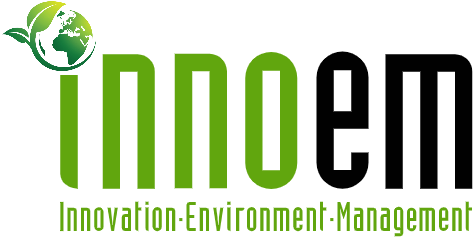‘Net-zero by 2050’ has steadily become a call-to-arms for many countries and companies worldwide to ramp up their climate ambition and take urgent action.
The 2018 Intergovernmental Panel on Climate Change (IPCC) Special Report on 1.5°C was a stark warning that global emissions must reach net-zero by 2050 to avoid the most catastrophic impacts of climate change.
Now 90% of the global economy is committed to reaching net-zero, up from 16% in 2019. However, many existing pledges lack the integrity and planning that is actually needed to reach net-zero by mid-century, and there is an urgent need for these pledges to be backed up with standardization and immediate action.
The Science Based Targets initiative’s Net-Zero Standard, launched in October 2021, provides a common and robust framework that empowers companies to set validated net-zero targets which align with science.
But the concept of net-zero comes with its own language and jargon. Some frequently-used terms can be confusing, unclear and even interchangeable. To help navigate the tricky terrain of net-zero, we have compiled a jargon buster of the most common terms used in net-zero discussions and in relation to our new Net-Zero Standard:
Greenhouse gases (GHGs)
Gases that absorb and trap heat (i.e. infrared radiation) from the Sun in the Earth’s atmosphere. Includes the following gases that are covered by the UNFCCC/Kyoto Protocol: carbon dioxide (CO2), methane (CH4), nitrous oxide (N2O), hydrofluorocarbons (HFCs), perfluorocarbons (PFCs), sulphur hexafluoride (SF6) and nitrogen trifluoride (NF3). These gases are the direct cause of climate change.
The term “GHGs” is often used interchangeably with “all UNFCCC/Kyoto GHGs,” and these gases must be covered by targets set under the Net-Zero Standard. Water vapor is also a GHG but is not covered by the UNFCCC/Kyoto Protocol or GHG emissions targets because concentrations of this gas are self-limited by the atmosphere and thus not a direct cause of global warming.
1.5°C
Science has made it clear that we must limit global temperature rise to 1.5°C above pre-industrial levels. We are currently at 1.1°C and are on track for 2.7°C according to the UNDP’s Emissions Gap Report 2021. Every fraction of a degree matters. Wildfires, heavy flooding, intense heat, drought, and storms are becoming more frequent and devastating.
Every bit of warming we avoid will reduce the climate risks we face. We need to keep global warming to 1.5°C to have a fighting chance of having a habitable and thriving planet for all of us.
Carbon sink
A reservoir (natural or human, in soil, ocean, and plants) where a greenhouse gas, an aerosol, or a precursor of a greenhouse gas is stored, or a process that removes CO2 from the atmosphere.
Anthropogenic
This means from humans or their activities and is usually used when talking about climate change, environmental damage and pollution.
Net-zero
A state of balance between anthropogenic emissions and anthropogenic removals. In most cases, it is important to specify either net-zero CO2 emissions or net-zero GHG emissions, which also includes non-CO2 GHGs. Net-zero GHG emissions must be achieved at the global level to stabilize temperature increase, and targets set using the Net-Zero Standard must cover all UNFCCC/Kyoto GHG emissions
The SBTi’s Net-Zero Standard outlines what companies need to do to enable the global economy to achieve net-zero. The Standard makes clear that for corporate net-zero targets in line with keeping global warming to 1.5°C require rapid and deep emission reductions. Companies must take action to halve their emissions by around 2030. Likewise, long-term deep emissions cuts of at least 90% before 2050 are crucial for net-zero targets to align with science.
Carbon neutral
Although often used interchangeably with ‘net-zero’, the two are not the same. In general, when companies claim carbon neutrality they are counterbalancing CO2 emissions with carbon offsets without necessarily having reduced emissions by an amount consistent with reaching net-zero at the global or sector level. This may conceal the need for deeper emissions reductions that are in line with what the science requires for the world to keep global warming to 1.5°C. Carbon neutrality claims also do not necessarily cover non-CO2 GHGs. The SBTi does not validate carbon neutrality claims.
Abatement
Measures that companies take to prevent, reduce, or eliminate sources of GHG emissions within their value chain. Examples include reducing energy use, switching to renewable energy, and retiring high-emitting assets. Another similar term is decarbonization, which refers to the process by which CO2 emissions associated with electricity, industry, and transport are reduced or eliminated. Under the Net-Zero Standard, most companies are required to reduce emissions by at least 90% to reach net-zero.
Scope 1
Direct GHG emissions occur from sources that are owned or controlled by the company, for example, emissions from combustion in owned or controlled boilers, furnaces, vehicles, etc. or emissions from chemical production in owned or controlled process equipment.
Scope 2
Emissions from purchased electricity, heat, and steam for use in business operations. Scope 2 emissions physically occur at the facility where electricity is generated, and so would fall into the scope 1 category for the power generator.
Scope 3
Scope 3 is a reporting category that allows for the treatment of all other indirect emissions. Scope 3 emissions are a consequence of the activities of the company, but occur from sources not owned or controlled by the company – typically as a result of supplier or customer activities.
These can be up or down the value chain – for example, transport and distribution, or the disposal of goods or services after they reach the consumer. Some examples of scope 3 activities are extraction and production of purchased materials; transportation of purchased fuels; and use of sold products and services.
Value chain emissions
Can mean a company’s scope 3 emissions. However, sometimes the term value chain is used more broadly and includes both a company’s operational (scope 1 and 2) emissions as well as scope 3.
Beyond value chain mitigation
Measures that companies take to prevent, reduce, or eliminate sources of GHG emissions outside their value chain. Examples include purchasing high-quality carbon credits and providing direct finance to climate mitigation.
The Net-Zero Standard expects that companies invest above and beyond, but not instead of deep emission cuts in line with science.
This type of action is sometimes called offsetting, however the term offset implies that there is an equal and opposite reaction. The Net-Zero Standard makes it clear that climate mitigation beyond a company’s value chain must be on top of, not instead of, a company’s own deep emission cuts.
Near-term science-based targets
Near-term science-based targets outline what companies will do now, and over the next 5-10 years, to reduce emissions in line with what the latest climate science deems necessary to limit warming to 1.5°C above pre-industrial levels.
Long-term science-based targets
Long-term science-based targets show the degree of emission reductions needed for companies to reach net-zero before 2050 in line with keeping global temperatures to 1.5°C. This level of emission reductions is sometimes called “residual emissions”.
Under the Net-Zero Standard, most companies are required to reduce emissions by at least 90% to reach net-zero.
A company can reach net-zero when it has achieved its long-term science-based target. A company cannot balance its emissions with removals ahead of that and claim to be net-zero.
Neutralization
Neutralization refers to measures companies take to remove carbon from the atmosphere and permanently store it to counterbalance the impact of emissions that remain unabated. These measures can be taken inside and outside of the value chain.
To achieve net-zero, any remaining emissions when the long-term science-based target is achieved (usually no greater than 10% of base year emissions) must be neutralized through carbon removals. Neutralization activities can take the form of technological removals (i.e. Direct Air Capture (DAC) with geological storage) and nature-based solutions (i.e. reforestation).
Mitigation Hierarchy
The principle at the heart of the SBTi Net-Zero Standard is the “mitigation hierarchy”. This means companies should commit to reduce value chain emissions and implement strategies to achieve these commitments as their main priority before acting outside their value chains.
Emission reductions must be the overarching priority for companies, and the central focus of any credible net-zero strategy. The sooner companies can collectively play a strong role in reducing global emissions, the greater our chances of keeping 1.5°C within reach. Beyond value chain mitigation should not replace a company’s own emissions reduction efforts.
Make a commitment to science-based net-zero today
More than 600 companies have already committed to set net-zero targets in line with the Net-Zero Standard through the Business Ambition for 1.5°C Campaign. But we need thousands more companies to set net-zero targets aligned to the Standard and act with the urgency the science requires. We hope the Standard will galvanize the corporate ambition required to keep humanity and our planet safe in this decisive decade for climate action. Companies are asked to signal their intention to help create a brighter, better net-zero world by making a commitment to the Standard today. The SBTi will begin validating net-zero targets from January 2022.
Source : https://sciencebasedtargets.org/blog/net-zero-jargon-buster-a-guide-to-common-terms

